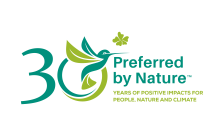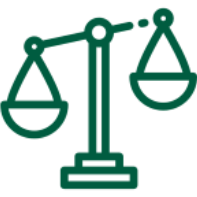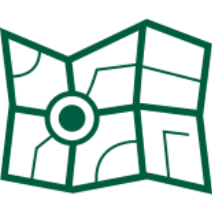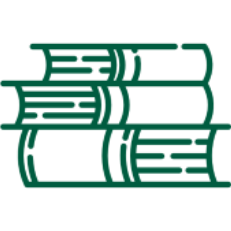Risk tools available in Chinese:
中国风险减缓指南2.0版 (China Risk Mitigation Guide V2.0, 2021 in Chinese)
Timber Risk Score: 77 / 100 in 2021. The Timber Legality Risk Assessment for China contains an evaluation of the risk of illegality in China for five categories and 22 sub-categories of law.
For the Chinese forest sector we found:
- Specified risk for 6 sub-categories.
- Low risk for 11 sub-categories.
- No legal requirements for 8 sub-categories.
For the wood-based import and supply chain transparency and traceability we found:
- Specified risk for 3 sub-categories
Please note: The Timber legality Risk Assessment relate to Mainland China only.
This page provides an overview of the legality risks related to timber produced in China.
Forests cover about 23% of the country, of which:
- 3% is bamboo forest
- 64% is natural forest (whether bamboo or not)
- 36% is plantations.
Forest ownership refers to the ownership or use rights to forest, timber, and forest land. There are three types of ownership:
- State-owned forest, timber, and forest land
- Collectively owned forest, timber, and forest land
- Individually owned timber and use rights to forest land.
There are five key trends within Chinese forests:
- Gross forest resources in China are growing
- Forest quality is steadily improving
- Natural forests are steadily growing in total area
- Total plantation area has increased rapidly in recent decades
- More timber is being produced from plantations. (CGTN, 2020)
China is the world's largest importer of timber, as domestic supply of industrial wood has failed to keep up with China's industrial manufacturing capacity. China faces increasing pressure to address its influence on illegal logging around the world, due to its growing demand and export of wood and wood products.
Some legality risks are present in China's timber supply chains. If you are sourcing timber from China you should take care to ensure the risks identified are not present in your supply chains, or have been sufficiently mitigated.
Score: 45 / 100 in 2021
Rank: 66 out of 180 countries in 2021
A moratorium on commercial harvesting from state owned natural forests was put in place in 2016 and extended to all natural forests from the beginning of 2017. Forest maintenance is allowed and timber from this can be sold legally. See a commentary from Preferred by Nature HERE.
Ban of exports of almost all logs since 2001. For details, please consult the list of goods prohibited from exporting on the website of the Ministry of Commerce of the People’s Republic of China.
Global Conflict Tracker (2019) did not report of any ongoing conflicts.
The Uppsala Conflict Data Program reports that there were 11 deaths from state-based violence in 2014-2019.
FSC Certified Forest Area: 5,490,876 hectares (4 December 2019).
PEFC Certified Forest Area: 284,765 hectares (31 December 2019).
Information Gathering
Timber sources
- Find out the different sources of legal timber
- Determine which source type your timber comes from
- Find out the main documents that can be used to indicate legality throughout the supply chain
| Timber source types | Description of source type |
|---|---|
|
Plantations |
Plantations are the main source of timber from China. These include timber from collectively, individually, or corporately owned commercial plantations, and state managed plantations. A harvesting permit is required. Timber from forests planted for other purposes, i.e., fruit trees, are known as economic forests. When the forest has no yield, the trees may still be harvested as materials for forest products. A harvesting permit is required. |
|
Natural forests |
Natural forests are not a significant source of wood-supply because China has implemented the Natural Forest logging ban nationwide by law, except for wood from tending or sanitary cuttings to maintain and enhance the natural forest. In addition, there are strict limitations to the dimensions of the trees which may be harvested. |
| Bamboo forests |
Bamboo forest refers to the forest community dominated by bamboo species. |
Risk Assessment
Risk assessment summary
|
Legal rights to harvest |
|
Taxes and fees |
|
|
Timber harvesting activities |
|
Trade and transport |
|
|
Traceability |
|
Specified risk species
| Common/trade name | Scientific name | Risk information |
|---|---|---|
|
Mongolian oak |
Quercus mongolica |
Natural forest species. Risk of mixing with Mongolian oak from Russia (EIA 2013, WWF 2013) |
Risk Mitigation
Mitigate the risks in your supply chain
Learn which actions we recommended to mitigate the risks associated with the timber sources from China.
Source Certified Materials
NEPCon believes that third party certification (for example FSC and PEFC certification) can provide strong assurances of the legality of the products they cover. Companies seeking to mitigate the risks of sourcing illegal timber should seek to purchase third party certified materials wherever possible.
While the European Timber Regulation does not include an automatic “green lane” for certified products, it does recognise the value of certification as a tool for risk assessment and mitigation. The European Commission says that companies “may rate credibly certified products as having negligible risk of being illegal, i.e. suitable for placing on the market with no further risk mitigation measures, provided that the rest of the information gathered and the replies to the risk assessment questions do not contradict such a conclusion.”
For more information on using certified materials in your due diligence, including how to assess whether a certification system meets EUTR requirements, see the page on Certification and Due Diligence.
Mitigation recommendations for non-certified materials
Where certified materials are not available, we have two tools to help you mitigate risks for Chinese timber supply chains:
- the Risk Mitigation Guide gives you a detailed overview of risks in China, and how to mitigate them. You can find the Risk Mitigation Guide in Chinese here.
- the Document Guide provides you with a list of all required documents and examples of key documents and how to use them in mitigating risks.
The tools above give you the most information. Below is a summary of our six recommended actions to mitigate the risks associated with timber sources from China that are not third party certified.
1. Fully map your supply chain
- Our supply chain mapping tool can help you do this.
2. Obtain and verify documents
- Forest level documents
- Forest tenure certificate
- Forest land leasing /transfer contract
- Immovable Property Certificate
- Approved Forest Management Plan, including annual harvest quota
- Harvesting permit - Tax related documents
- VAT invoice - Health and safety related documents
- Health and safety procedures document
- Training Records for safe operation
- Evidence of Injury Insurance to cover all workers
- Accident records - Employment related documents
- The list of permanent and temporary workers and their contracts
- Injury insurance payment records - Trade and transport documents
- Customs Declaration Registration Approval Certificate and Phytosanitary certificate (where applicable)
- Commercial invoice
- Invoices and documents of origin
- Export import and re-export certificates
3. Consult with stakeholders
- Neighbours, local communities, landowners, and other stakeholder to confirm that there are no conflicts on the land.
- Country forestry authorities
- to check if the forest management plan and Annual harvest quota have been approved
- to check if the state forest management enterprise in question is following the approved forest management plan
- check and ensure the harvest does not go beyond the approved harvest quota before issuing the harvest permit - Relevant staff/ workers
- to confirm that they are aware of health and safety procedures and have participated in training
- to confirm that there are no issues with lack of labour contracts, or other contractual violations.
4. Carry out on-site verification
- Confirm that health and safety equipment is used during harvesting
- Confirm that on-site staff are covered by labour contracts
5. Conduct targeted timber testing
- Conduct timber testing on samples of purchased material to verify the species or origin of timber, where appropriate. Read our Thematic Article on timber testing, a guide to laboratory techniques to determine species and origin of timber products, to find out more.
6. Avoid / do not buy
- Avoid products that include materials bought at spot- and/or open-markets












